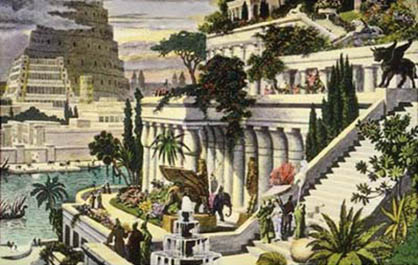|
|
| home > files |
| Dreaming
Dubai Marco Vanucci |
||||
| [in italiano] | The
dynamics that move the organization of the contemporary city continuously
escape the remits of total comprehension and interpretation: hence the
urban experience is characterized by its mutable and contradictory nature
in which the market forces determine changes and metamorphoses. These
mutations simultaneously deeply modify the complex dynamics of spatial
and temporal usage within the contemporary city. |
[13feb2006] | ||
However,
it could be argued that society also assists this relatively new phenomenon
of transformation of the city, due to necessities caused by deep economical
changes. That's the case of what's happening in Dubai. According to
geological forecasts, in a relatively short period of time, the oil
reserves will expire in the area of the Persian Gulf. In order to avoid
a terrific economical crisis, a total reconfiguration of the city based
on incentives to the tertiary 'invisible' sector has been choreographed.
Services such as financial institutions, scientific research but mainly
hotels and avant-garde architectural design aid the transformation of
Dubai into one of the most luxurious places worldwide. The Lighthouse of Alexandria. Nowadays it's only the beginning of this change; it seems to be destined to transform Dubai into a Wonderland: For example it is planned that three out of the Seven Wonders of the World will be constructed. Specifically, the Cheop's pyramid, the hanging gardens of Babylon, the Lighthouse of Alexandria. In addition Pisa's Tower, the Eiffel Tower and the Great Wall of China, will be sharply reproduced thanks to the employment of petrol-dollars. Beyond the debatable and, at the same time, colossal operations of urbanistic cut and paste which are radically reshaping Dubai, what makes this extraordinary open-air laboratory interesting is the gap determined by this experience in relation to the planning of the contemporary post modern city. The Post modern was, in fact, primarily an expression of a fundamental trend of the contemporary living linked with the general cultural environment, its lifestyles rather than fully reflecting itself into the shape of the city and its architectures. Dubai represents the last evolutionary phase of the urban contemporary experience within which the desire, already to some extent, the heart of the urban organization in other contexts, becomes the only organizational criteria through which the right to plan dreamy urban scenarios totally overlap the real city. The fine boundary line between dreamed city and real city is literally translated into the articulation of the cityscape.  Dubai, conceived and designed as a new luxurious Mecca, must reflect an ideal timeless beauty in which an a-critical collage composes the skyline. Precisely in line with the post modern urban experience and, moreover, formally born from that linguistic universe, Dubai represents, an urban ready-made in which a massive insertion of economical capitals together with the employment of the most advanced technologies and infrastructures makes possible the reification of a utopian urban condition. At the same time, its' effect is hyper-real and produces a temporal suspension in which the past is actualized within an eternal present. The Great Wall of China and the high-tech skyscrapers, the sky dome and an ancient Medina precisely reproduced, sit together within the city, which is becoming a self-simulacra. If the post modern city was posing itself in a dialectic relationship with the historical city, mimicking on one hand the architectural languages but, moreover, deeply changing the experiential aspects of the metropolitan life; Dubai represents the trait d'union between the post modern mindscape and the post modern cityscape. The shapes of the city, in fact, compose an urbanite bricolage in which the economical forces and the logic of profit originate a fragmented and contingent planning, fulfilling an oneiric view of the city and its parts. Nevertheless the urban planning, ultimately, is nothing but the reflection of a diffused hedonism, a mass individualism that is organizing the city through the right to the experience of pleasure.  The Hanging Gardens of Babylon. This is a sort of dictation of the desire in which what belongs to a utopian vision of the city and its wonders gains the right to be artificially realized. This is due to the employment of technology which is the medium in the service of "caprice": a sky slope in the desert, the tallest skyscraper of the world (800 meters), artificial islands forming palm trees-like archipelagos rather than world-like archipelagos with luxurious houses designed "in style" according to the continent they belong to. Dubai is there to satisfy the last fantasies within the city, it's the residual swatch of what could have already been but the technique were unable to realize; today even that taboo has gone. Marco Vanucci marco.vanucci@gmail.com |
||||
| Marco Vanucci has studied at the Architectural Association School of Architecture in London where he graduated in 2004 with "Cell System Morphologies", a research on hyper-articulation of emerging systems in architecture. He's currently working for Zaha Hadid Architects on international competitions and commissions. | ||||
| > ARCHITETTURE: DOSARCHITECTS. RESIDENTIAL TOWER... | ||||
| Per
qualsiasi comunicazione laboratorio
|